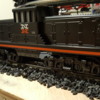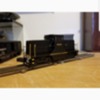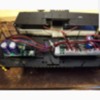Good afternoon
Ok..got my Williams Bachmann 44 ton today..it' taking some getting used to.
My biggest problem...I can' get it into creeping/switching speed!..hell my old Marx, and my Williams oversized will creep along just fine..this new engine has two speeds..normal..and rocketship!!..I'm using a rail-king z500 controller.....I've mastered the sounds...but I want my switching speed!!..lol
Thanks
Kevin









